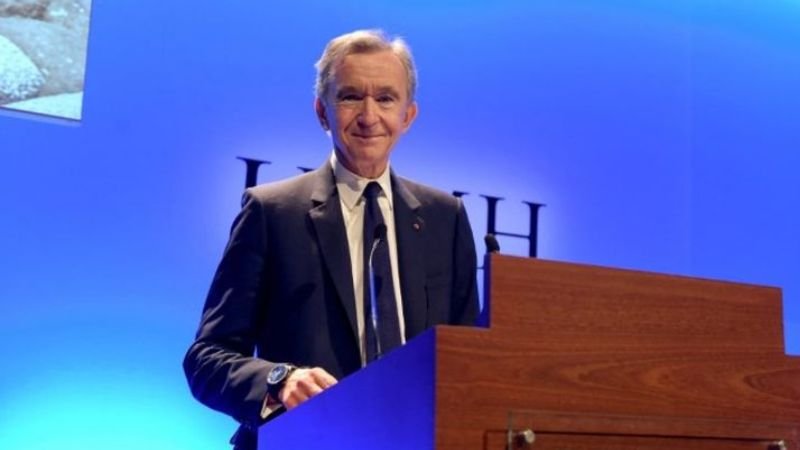By TheCconnects Magazine – An in‑depth profile for entrepreneurs, business leaders & C‑Suite executives
In the world of luxury brands, few figures are as dominant, strategic and quietly powerful as Bernard Arnault. As chairman and CEO of LVMH Moët Hennessy Louis Vuitton (LVMH) and the controlling stakeholder behind one of the largest luxury goods empires in the world, Arnault has built a fortune that underscores several essential business truths: platform ownership, brand equity, global expansion and multi‑decade vision. For the readers of TheCconnects-entrepreneurs, executives and enterprise strategists-his journey is more than a billionaire profile; it’s a case study in building global enterprise value in the luxury sector.

1. Estimated Net Worth in 2025
As of 2025, Bernard Arnault’s net worth is estimated in the US$170‑190 billion range, placing him consistently among the top five richest people on the planet. For example:
- According to The Street, his net worth as of late January 2025 stood at approximately US$189.6 billion.
- Recent reporting noted a sudden surge from about US$173 billion to roughly US$192 billion in mid‑October 2025, driven by a strong performance of LVMH shares.
- Other sources place his net worth slightly lower-around US$172.1 billion.
Given fluctuations in stock markets, currency and luxury‑goods demand, a conservative working estimate of about US$180 billion is realistic for business‑analysis purposes.
2. How the Wealth Was Built: From Engineering to Luxury Empire
Early Foundations
Arnault’s path did not begin in fashion, but in engineering. He studied at École Polytechnique and initially worked in his father’s construction company, before shifting to property and then ultimately acquiring and transforming a struggling luxury group.
Building the Luxury Platform
In 1989 Arnault took the helm at Financière Agache and soon positioned the family holding as the controlling shareholder of Dior and then LVMH. From there, he began acquiring luxury brands-watchmakers, fashion houses, spirits brands-and building a conglomerate that leveraged scale, brand heritage and global resonance.
Ownership & Equity Stake
A key to Arnault’s wealth is his ownership and voting control in LVMH. Estimates suggest his stake in LVMH is nearly 48–49 % of voting rights, making his personal wealth highly correlated to LVMH’s performance.
Global Scale & Brand Portfolio
LVMH’s brand portfolio is vast: icons like Louis Vuitton, Christian Dior, Fendi, Bulgari, Tiffany & Co., and many others. A 2024 annual report indicates revenue of €84.7 billion, assets of €149.2 billion.
These scale metrics provide the underpinning for Arnault’s personal net worth.
3. Key Revenue & Value‑Drivers
For a senior business audience, it is critical to understand the structural underpinnings of Arnault’s wealth:
Brand Premium & Pricing Power
Luxury goods command high margins thanks to brand heritage, exclusivity and global consumer demand-especially from emerging markets. Arnault’s strategy has emphasised premium‑positioning rather than volume commoditisation.
Global Geographic Reach
LVMH generates large revenue from Asia (particularly China), the United States and Europe. The geographic diversification mitigates regional risk and captures high‑growth luxury consumers. (
Acquisition & Integration Strategy
Arnault has grown the empire not only organically but via strategic acquisitions-buying controlling stakes in luxury houses, integrating them under LVMH’s infrastructure, and preserving heritage while scaling operations.
Voting Control & Family Office Structure
The Arnault family owns significant voting shares via Financière Agache and other holding structures. This means decisions and long‑term alignment are closely held, and wealth creation remains focused on value rather than short‑term liquidity.
4. Strategic Inflection Points & Recent Movements
Several pivotal moments stand out:
- Late 1980s–1990s: Arnault acquired Boussac, took control of Dior, and began building what became LVMH.
- 2000s: Expansion of global stores, brand diversification, entry into new luxury segments (watches, jewelry, spirits).
- 2020s: While luxury globally was hit by the pandemic, Arnault rebounded as Asian markets, online channels and premium luxury spending recovered.
- 2025 Mid‑Year Surge: Following positive earnings and stock performance of LVMH, Arnault’s personal fortune surged, reflecting the direct link between the corporation’s value and his wealth.
5. Challenges, Risks & Strategic Considerations
For corporate‑strategy professionals, Arnault’s wealth story also highlights risks and strategic considerations:
Market Sensitivity to Consumer Demand
Luxury spending is cyclical and regionally sensitive-especially in China and among younger demographics. A slowdown or shift in consumer behaviour can impact luxury revenue and thus wealth valuations.
Concentration Risk on Equity
While Arnault has other holdings, the bulk of his net worth is tied to LVMH. Heavy reliance on one enterprise exposes him to enterprise‑specific risk.
Succession & Corporate Governance
As the head of a family‑controlled empire, succession planning and maintaining governance integrity remain strategic issues for long‑term value. Analysts monitor how roles shift and how the next generation is readied.
Regulatory & Societal Risk
Increasing scrutiny of wealth concentration, taxation (especially in Europe), luxury brand ethics and sustainability could affect brand perception and value ascendency.
6. Lessons for Entrepreneurs, C‑Suite Leaders & Business Strategists
Bernard Arnault’s rise offers several actionable lessons for senior decision‑makers:
- Own the Platform: Like Arnault owning LVMH, building and retaining controlling equity in your business or platform drives value far beyond salary or dividends.
- Leverage Brand Equity: Premium positioning, heritage, and consistent brand experience can yield higher margins and enterprise value.
- Global‑First Mindset: Building global distribution, especially into high‑growth regions, opens scale and diversity that matters in modern enterprise growth.
- Strategic Acquisitions + Organic Growth: A hybrid of growth methods (own brand development + acquisition) can accelerate value creation while maintaining core identity.
- Long‑Horizon Vision: Arnault’s wealth accumulation is not about a short‑term flip-it’s about decades of building, consolidating and preserving value across economic cycles.
- Governance & Succession: As companies scale, leadership structures, governance frameworks and next‑gen readiness become critical to sustaining value.
7. The Final Word
In 2025, Bernard Arnault stands as one of the most affluent individuals globally-but the significance of his net worth goes well beyond raw numbers. It is a testimony to how luxury, brand control, global reach and strategic ownership converge to generate enduring enterprise value.
For the readers of TheCconnects Magazine, Arnault’s story is not just about personal fortune. It’s about how to build, protect and evolve a business empire in a competitive, globalised landscape. Whether you’re scaling a startup, leading a corporate brand or planning an acquisition strategy, the principles behind Arnault’s success are instructive: ownership matters, brand differentiation matters, execution across global markets matters-and long‑term vision matters most of all.
Want to Get Featured on TheCconnects?
If you’re a business leader, entrepreneur or strategist with a compelling story, we invite you to publish your article or guest post with TheCconnects.
📩 Email: contact@thecconnects.com
📞 Call: +91 91331 10730
💬 WhatsApp: https://wa.me/919133110730
TheCconnects – Where insight meets influence.



